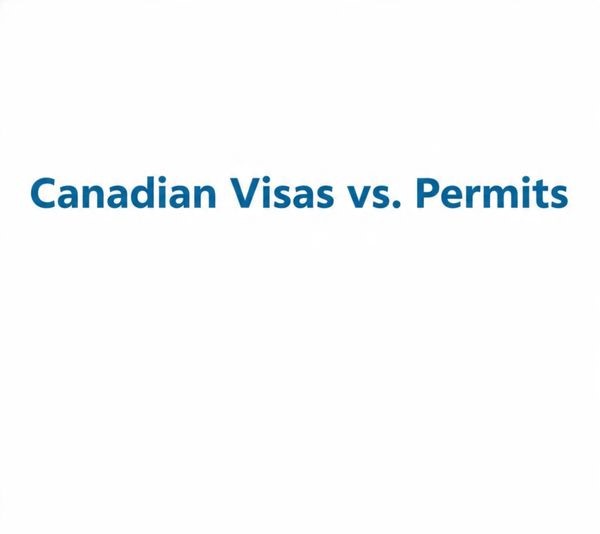Understanding the difference between visas and permits is crucial for anyone planning to visit, study, or work in Canada. While these terms are often used interchangeably, they serve very different purposes in Canadian immigration. Key Differences Between Visas and Permits Visas: Your Entry Ticket to Canada A visa (stamped in your passport) allows you to enter Canada Most common types: Duration: Typically valid for up to 10 years or until passport expiry Important: A visa does not determine how long you can stay—only when you can enter Permits: Your Legal Status Inside Canada A permit authorizes you to stay and perform specific activities (study, work, etc.) Common permits: Duration: Depends on your program or job offer (e.g., study permits match program length) Critical Note: A permit does not guarantee reentry—you still need a valid visa to return to Canada Common Misconceptions Clarified ❌ “My 10year visa means I can stay for 10 years” ✅ Reality: The visa only allows entry—your permit (or border officer’s stamp) decides your stay duration. ❌ “I don’t need a visa if I have a valid permit” ✅ Reality: If you leave Canada, you’ll need a new visa (unless exempt) to return—even if your permit is still valid. ❌ “Tourists automatically get 6 months in Canada” ✅ Reality: The border officer decides your stay length (could be 2 weeks, 3 months, etc.). RealLife Scenarios Case 1: The International Student Case 2: The Tourist with a 10Year Visa Pro Tip: Always Check Both Documents Before traveling, ensure: 🔹 Need help? send us a message to avoid costly mistakes. 📌 stay tuned for more Canada immigration tips! Understanding visas vs. permits could save your Canadian dream—don’t leave it to chance. Let Worldbridge Immigration Services be your guide to a successful future in CanadaContact us: Website: www.theworldbridge.caEmail: info@theworldbridge.caPhone/WhatsApp: +1-416-727-7766Social Media: @worldbridgeHQ
Today’s Date - Friday, August 22, 2025



